
http://www.iaeme.com/IJM/index.as 209 editor@iaeme.com
International Journal of Management (IJM)
Volume 8, Issue 2, March – April 2017, pp.209–216, Article ID: IJM_08_02_022
Available online at
http://www.iaeme.com/ijm/issues.asp?JType=IJM&VType=8&IType=2
Journal Impact Factor (2016): 8.1920 (Calculated by GISI) www.jifactor.com
ISSN Print: 0976-6502 and ISSN Online: 0976-6510
© IAEME Publication
CUSTOMERS SATISFACTION IN UTILITY
SECTORS OF PUBLIC ENTERPRISES IN NEPAL
Dr. Jitendra Prasad Upadhyay
Associate Professor, Nepal Commerce Campus T. U, Nepal
ABSTRACT
Background - Customer satisfaction is a measure of how products and services
supplied by a company meet or surpass customer expectations. The question is not how
satisfied customers are, but how emotionally attached they are to organization’s
products, services and brands.
Purpose – The purpose of this study is to examine the level of customer satisfaction
in public enterprises of Nepal
Methodology Used – Descriptive and analytical research designs have been used
for the study. Primary data have been collected through the questionnaires using
judgmental sampling from the three public enterprises of Nepal. Questionnaires have
been developed in five scales and mean, standard deviation and coefficient of variation
have been used as tools.
Cronbach’s alpha test has been done to test the reliability of the data.
Findings – All the public enterprises have not been able to satisfy their customers.
Key words: Customer Satisfaction
Cite this Article: Dr. Jitendra Prasad Upadhyay, Customers Satisfaction In Utility
Sectors of Public Enterprises In Nepal. International Journal of Management, 8(2),
2017, pp. 209–216.
http://www.iaeme.com/IJM/issues.asp?JType=IJM&VType=8&IType=2
1. BACKGROUND
A customer is an individual or business that purchases the goods or services produced by a
business. Attracting customers is the primary goal of all organizations, because it is the
customer who creates demand for goods and services. No matter the size of your business, good
customer service needs be at the heart of your business if you wish to be successful. Customer
satisfaction is nothing more than a snapshot of how customers feel about organization’s
products, services and brands, at a given point in time. Customer satisfaction is the heart of the
business process. It translates to customer loyalty, and loyalty is one of the biggest drivers of
corporate growth. A loyal customer is certainly a satisfied customer, but a satisfied customer is
not necessarily a loyal customer. Customer satisfaction is a business philosophy which tends to
create value for customers, anticipating and managing their expectations and demonstrating
ability and responsibility to satisfy their needs. Qualities of service and customer satisfaction

Dr. Jitendra Prasad Upadhyay
http://www.iaeme.com/IJM/index.as 210 editor@iaeme.com
are critical factors for success of any business, (Gronoos, 1990). Customer satisfaction is the
difference between the expectations of the customers before receiving the services and
perceptions of the customers after receiving the services. Customer satisfaction mainly depends
on the build-up of the perceived value to which the customers have concerning a product or
service, (Kotler, 2009). When a company fails to meet customers’ expectations, they take action
i.e. they cancel services, they switch the products and they change the organizations. They also
share their experiences through tweet, chat, blog, ratings, recommendations and warnings. In
other words, customers are sharing their opinions and their preferences with their neighbors,
like-minded friends and their relatives. One estimate is that it costs five times as much to attract
new customers as it does to keep an existing one. It is said that 47% of customers recommend
the products they love to friends, 88% of customers recommend the brands they dislike to
ferneries.
1.1. Importance of Customer Satisfaction
It is important to provide good customer service; to all types of customers, including potential,
new and existing customers because:
Organizations are dependent upon their customers. If they do not develop customer loyalty
and satisfaction, they can lose their customers.
• Measuring satisfaction lets you know if a customer will buy from you again.
• It keeps you ahead of your competitors.
• Acquiring new customers is more expensive than keeping the ones you already have. Without
customers the organization would not exist.
• The customer makes it possible to achieve business aims
• Customers provide feedback on company performance and give suggestions for new
products
• Customers voluntarily promote the company’s products and services to others
2. PUBLIC ENTERPRISES (PES) IN NEPAL
Public enterprise means state ownership and operations of industrial, agricultural, financial and
commercial undertakings. “Public enterprises are autonomous or semi-autonomous
corporations and companies established, owned and controlled by the state and engaged in
industrial and commercial activities” (Mallay). The basic aims of public enterprises are to
provide goods and services to the public at a reasonable rate and social services.
2.1. Characteristics of Public Enterprises
• Financed by the government
• Managed by the government
• Financial independence though investment is done by the government
• Aim to provide services to various sectors
• Direct channels for using foreign money
• Helpful in implementing government plan
• Autonomous and semi autonomous bodies

Customers Satisfaction In Utility Sectors of Public Enterprises In Nepal
http://www.iaeme.com/IJM/index.as 211 editor@iaeme.com
2.2. The major objectives of establishing public enterprises in Nepal are:
• to provide basic necessary goods and services to the public at fair prices
• to generate the employment opportunities
• to develop the economic and social infrastructure for sustainable development
• to increase efficiency and independency and to promote economic growth and people’s welfare
for social justice.
• to earn foreign exchange and utilize foreign aid
• to obtain economic, political and social objectives of the nation by mobilizing available capital
and labor resources.
Currently there are 37 PEs operating in Nepal including banks and insurance company,
telecommunication, electricity, water supply and manufacturing sectors etc. The contribution
of public enterprises to GDP of Nepal has been Rs.270 billion. 37 PEs formed under five
different acts operate under full and partial ownership of the Government of Nepal, they are,
Company Act, Corporation Act, Special Act related to enterprises, Communication Corporation
Act and Banks and Financial Institutions Act (Economic Survey, 2015).
Classification of Public Enterprises in Nepal
S. N. Sectors No.
1 Industrial 7
2 Business 6
3 Service 7
4 Social 5
5 Utility 3
6 Financial 9
Total 37
3. OBJECTIVES OF THE STUDY
The main objectives of this study are:
• To determine the customer satisfaction levels of public enterprises.
• To determine in which areas are the customers unsatisfied.
• To understand how unsatisfied customers can be made satisfied.
4. METHODOLOGY USED
This study has followed both descriptive and empirical approach of research. A questionnaire
survey has been conducted for getting the answer of research questions. The questionnaire
survey includes 15 questions. Questionnaires were distributed to 30 customers in each public
enterprise. In order to increase the reliability and number of responses, personal visits to each
and every respondent were made to distribute and collect the questionnaire.
Primary data have been analyzed using different statistical tools, like means, standard deviation;
and coefficient of variance. Five scale Likert Scale has been used for analysis.
There are total of thirty seven public enterprises in Nepal, which constitutes the population
of the study. For this study, only three public enterprises, i.e. Nepal Telecommunications
Corporation (NTC), Nepal Electricity Authority (NEA) and Nepal Water Supply and Sewerage
Corporation (NWSSC) have been selected as sample public enterprises. Selection of sample is
based on convenience basis and focused should be given to service related public enterprises
i.e. public utility sector.

Dr. Jitendra Prasad Upadhyay
http://www.iaeme.com/IJM/index.as 212 editor@iaeme.com
Cronbach’s Alpha test has been done to test the reliability of data. Each and every variable
have been tested and it was found that every variable reliability test was above 81%.
3.1. Respondent’s Profile
In this section, characteristics of respondents have been presented first gender wise and then
after age wise.
a) Gender Wise Respondents
Name of the Public Enterprises Male (No.) % Female (No.) % Total %
Nepal Telecommunication Co. 19 21.11 11 12.22 30 33.33
Nepal Electricity Authority 22 24.44 8 8.89 30 33.33
Nepal Water Supply & Sewerage Co. 23 25.56 7 7.77 30 33.33
Total 64 71.11 26 28.89 90 100
Majority of respondents were males i.e. 71.11%. But female respondents were also
satisfactory in number i.e. 26 out of 90.
Highest number of male respondents was in NWSSC and females were in NTC i.e. 23 and
11 in number out of 30 respectively. Similarly lowest number of males respondents were in
NTC and female were in NWSSC i.e. 19 and 7 in number out of 30 respectively.
b) Age Wise Respondents
Name of the Public Enterprises Below 25
Years
% 25 to 50
Years
% Above 50
Years
% Total
Nepal Telecommunication Co. 9 10 12 13.33
9 10 30
Nepal Electricity Authority 8 8.89 13 14.45
9 10 30
Nepal Water Supply & Sewerage Co. 11 12.22
11 12.22
8 8.89 30
Total 28 31.11
36 40 26 28.89
90
Majority of respondents were found in 25 to 50 years group 36 out of 90 i.e. 40%. Minority
respondents fall in the group of below 25 years which was 28 out of 90 i.e. 31.11%. Respondents
in the group of above 50 years group were 26 i.e. 28.89%.
5. ANALYSIS AND FINDINGS OF CUSTOMERS SATISFACTION
5.1. Customers Motivation (CM)
How much the customers of the PEs are motivated? This question is very important for every
public enterprise to motivate their customers for achieving its goals and objectives. Motivation
results from a. understanding needs and expectations of customers (NE), b. level of satisfaction
with PEs in regards of services (LS) and c. public enterprise cares about its customers (CC). In
this regard three questions were asked to the customers.
Name of the Public Enterprises NE LS CC Total Mean S. D. C. V.
Nepal Telecommunication Co. 3.0 3.1 3.2 9.3 3.10 0.10 3.26
Nepal Electricity Authority 2.8 2.7 2.6 8.1 2.70 0.10 3.70
Nepal Water Supply & Sewerage Co. 2.5 2.4 2.7 7.6 2.53 0.15 5.93
Customer Motivation has ranged between 2.53 to 3.10. NTC has motivated their customers
much compared to other. NWSSC (2.53) seem to have motivated its customers less as its value
is less than 3. All the PEs understands the needs and expectations of customers, and they care

Customers Satisfaction In Utility Sectors of Public Enterprises In Nepal
http://www.iaeme.com/IJM/index.as 213 editor@iaeme.com
about their customers but they have to focus more in this regard. Levels of satisfactions of all
the customers in all the PEs have also been not satisfactory.
The overall performance of the PEs in terms of customers’ motivation is not satisfactory.
In all the PEs, the value of standard deviation has been below 1 and coefficient of variation has
been 3.26% to 5.93%. This clearly indicates the representative nature of the mean calculated.
5.2. Quality Services (QS)
How much the customers are happy or satisfied with the services provided by the PEs is another
important issue. Quality service is the image & impression that has created in the minds of
customers in terms of PEs’ professionalism, technical competencies, problem handling,
reliability, banking services, and relationship. Quality of services is reflected in terms of a.
friendly behavior of public enterprise’s staff (FB), b. reliability of enterprises activities (RA)
and c. PE’s efforts in handling of problems (EHP). To assess these aspects of quality services,
three questions were asked to the customers.
Name of the Public Enterprises FB RA EHP Total Mean S. D. C. V.
Nepal Telecommunication Co. 3.1 3.3 3.0 9.4 3.13 0.15 4.80
Nepal Electricity Authority 2.8 2.6 2.8 8.2 2.73 0.12 4.40
Nepal Water Supply & Sewerage Co. 2.5 2.3 2.7 7.5 2.50 0.20 8.00
Quality Service has ranged between 2.50 to 3.13. NTC has been much satisfactory to the
customers in terms of its quality service. All the PEs except NTC has not been able to provide
friendly environment and not able to gain trust of their customers as the value of FE and RA
have been less than 3. But in case of handling the problems of the customers all the PEs have
been moderately satisfactory whose value have been near to 3.0.
The overall performance of the PEs in quality service is not satisfactory. In all the cases,
the value of standard deviation has been below 1 and coefficient of variation has been 4.40%
to 8.00%. This clearly indicates the mean is dependable.
5.3. Innovativeness (I)
How much the PEs are innovative in terms of changes and improvements (e.g. in strategies,
policies, rules, products etc.) and how they have impacted on customers’ satisfaction.
Innovativeness involves a. changes and improvements of infrastructure (CII), b. changes and
improvement of products (CIP) and c. changes and improvement in services (CIS). In this
regard, three questions were asked to the customers.
Name of the Public Enterprises CII CIP CIS Total Mean S. D. C. V.
Nepal Telecommunication Co. 3.1 3.4 3.3 9.8 3.27 0.15 4.59
Nepal Electricity Authority 2.7 3.0 2.9 8.6 2.87 0.15 5.23
Nepal Water Supply & Sewerage Co. 2.6 2.8 2.7 8.1 2.70 0.10 3.70
Innovativeness value has ranged between 2.70 to 3.27. NTC has been found to be the most
innovative of all the PEs. NEA (2.87) and NWSSC (2.70) have been found less innovative in
satisfying their customers. All the PEs have made changes and improved in its products and
services. Similarly, they have made improvement in infrastructure also but all of them have to
give more emphasis on in this regard. The overall innovativeness of the PEs is moderately
satisfactory. In all the cases, the value of standard deviation has been below 1 and coefficient


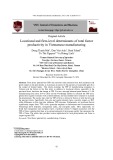
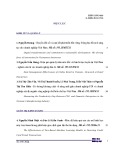
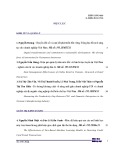


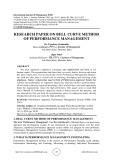

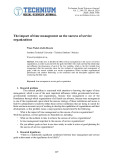
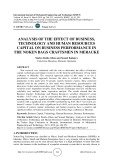







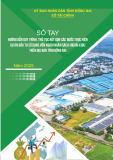
![20 câu hỏi Quản lý dự án phần mềm có đáp án [mới nhất]](https://cdn.tailieu.vn/images/document/thumbnail/2025/20251003/hieu2004haha@gmail.com/135x160/78791759734259.jpg)


![Tài liệu Quản lý dự án: Kiến thức nền tảng toàn diện [chuẩn SEO]](https://cdn.tailieu.vn/images/document/thumbnail/2025/20250910/kimphuong1001/135x160/92631757496585.jpg)



